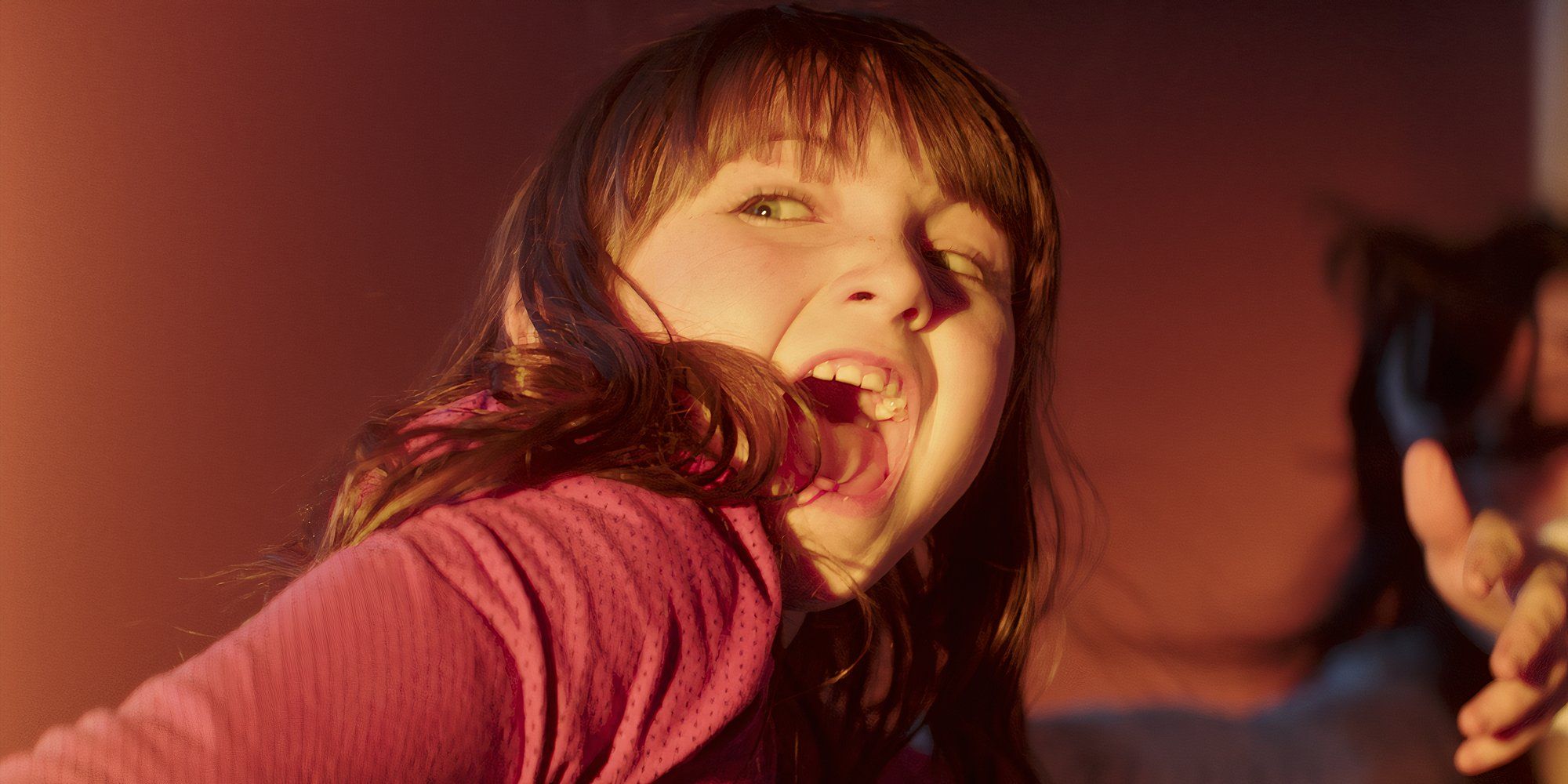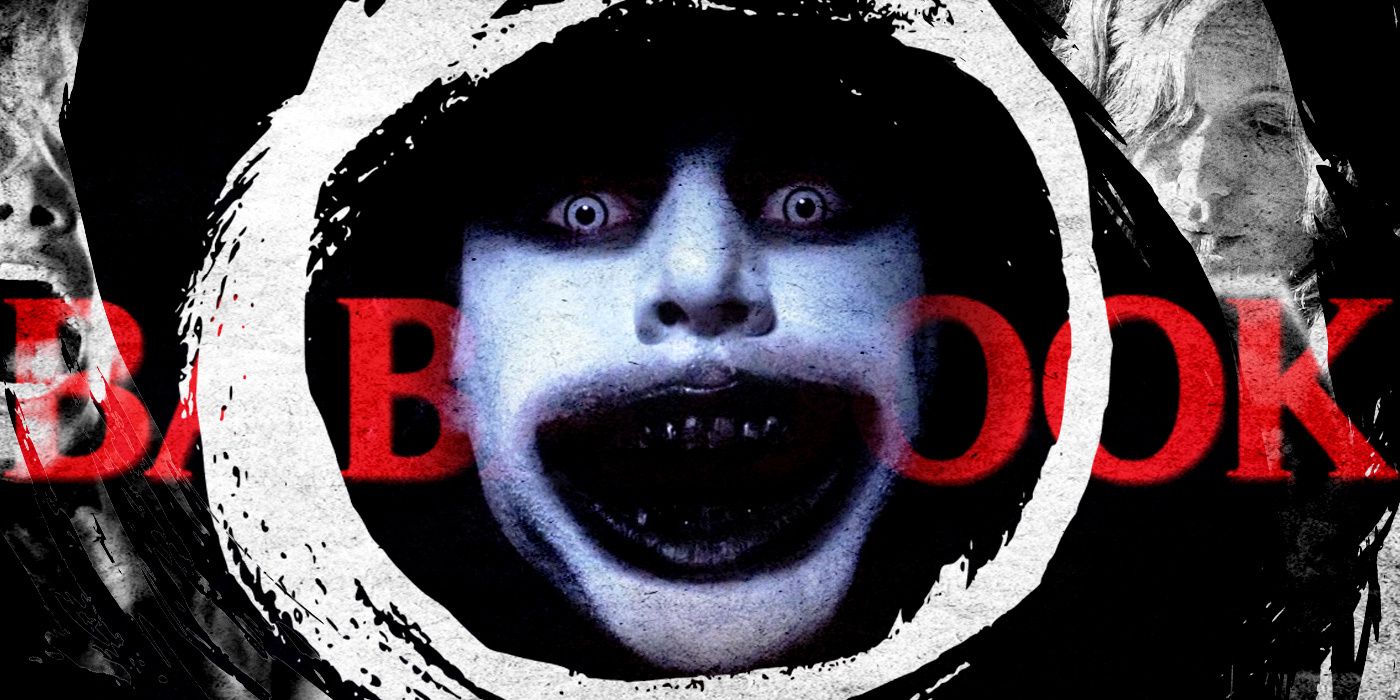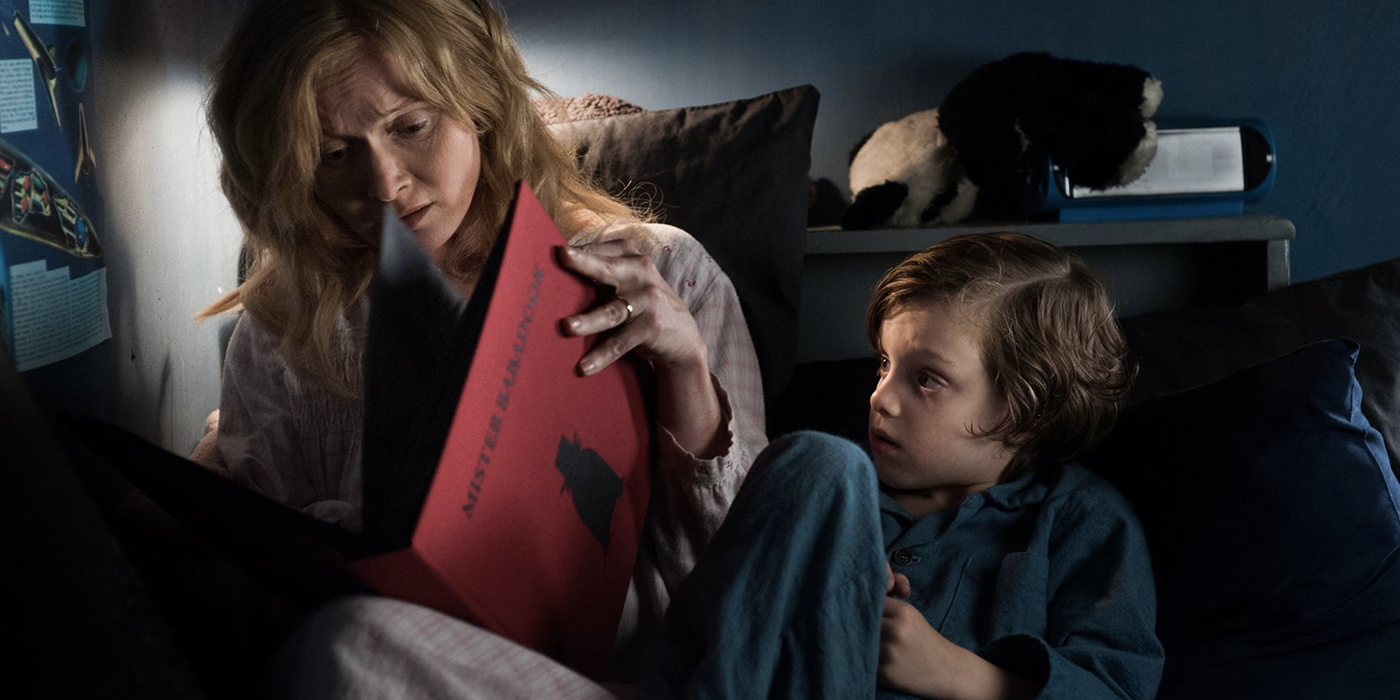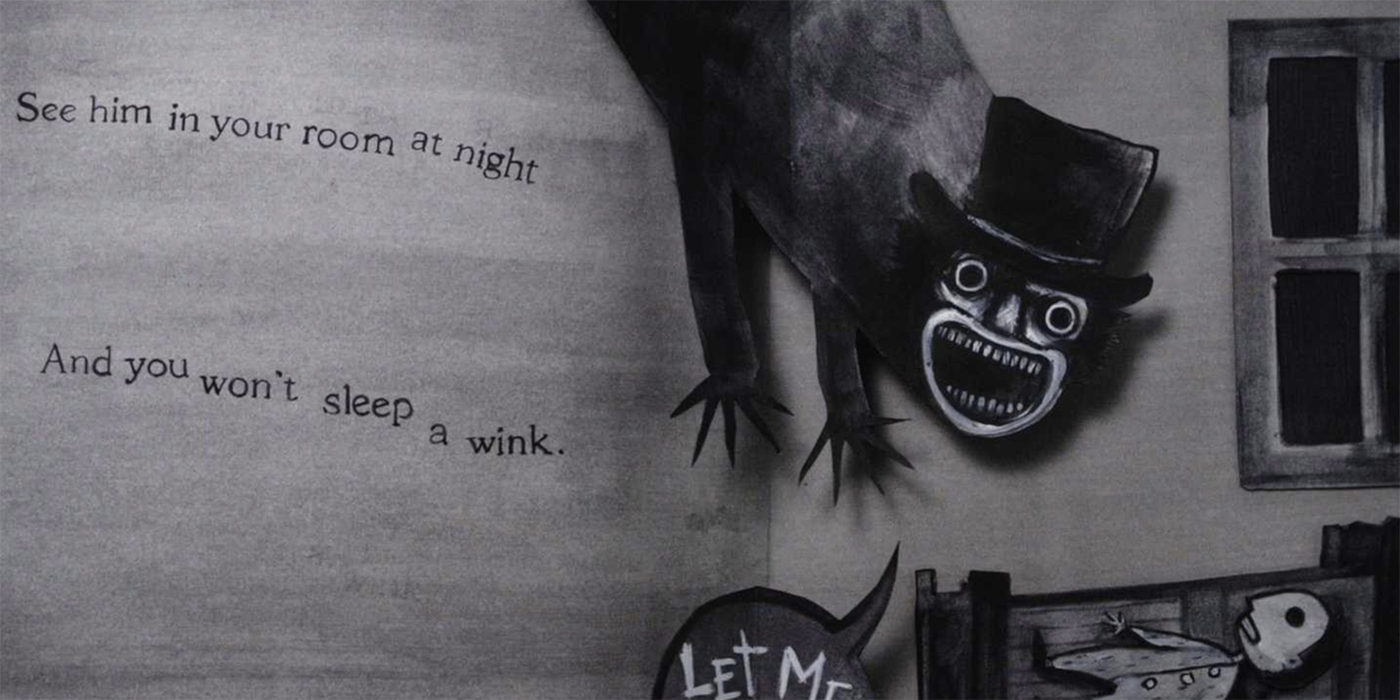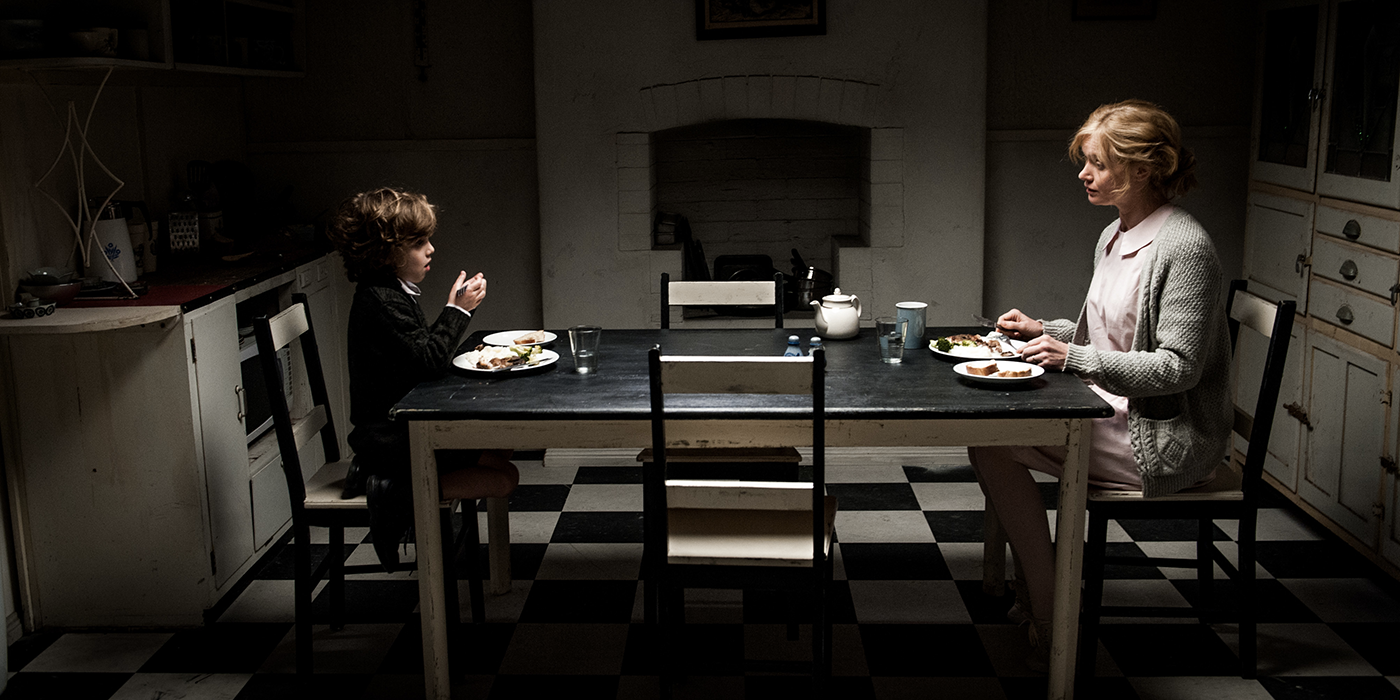The ending of The Babadook (directed by Jennifer Kent) is fairly straightforward in terms of what literally happens, but these events are unusually rich with metaphorical meaning. The ending offers several compelling ideas about motherhood, childhood, and how to approach grief and trauma effectively.
Here is a brief summary of the events leading up to the film’s ending: Amelia (Essie Davis) is the single mother of Sam (Noah Wiseman). Sam’s father Oskar (Benjamin Winspear) died in a car crash while he was driving Amelia to the hospital to give birth. Now, Amelia works a service job at a retirement home, and Sam exhibits behavioral and emotional problems at school and with other children. Mother and son struggle on a daily basis because of the unreasonable demands of parenting placed on a single, working-class mother. Sam finds a creepy children’s book on the shelf called The Babadook and asks Amelia to read it to him. When she does, the book scares Sam, and Amelia suffers another sleepless night trying to quiet Sam's tears. She disposes of the book, but it reappears on their doorstep. She burns the book, and the same thing happens.
Then, the Babadook (the monster from the children’s book, voiced by Tim Purcell) comes alive and haunts Amelia and Sam. As the book says, “You can’t get rid of the Babadook,” and the monster takes turns possessing both Sam and Amelia. When Sam is possessed, he yells, screams, and pushes his cousin out of a multi-story treehouse. When Amelia is possessed, she kills the dog, disconnects the phone lines, puts broken glass in the soup, and attempts to kill Sam. The book prophesied that she would also take her own life after taking Sam’s if she succeeded in this.
At the end of the film, Sam (no longer possessed) has to restrain Amelia (possessed) in the basement and expel the monster from her to save them both. But, the Babadook does not die, because you can’t get rid of the Babadook. Once the monster is expelled, Amelia and Sam run up the stairs and close the basement door, confining the Babadook to the basement. The film then flashes forward several months, to Sam’s birthday party. Amelia is shown calmly going down to the basement to check on the Babadook and to feed him. When he comes out of the shadows to get the food, Amelia recoils a bit in fear, but she stays in control of her fear. Later, her sister asks her how “it” was today. Amelia replies that it was quiet today (suggesting that the task of feeding/tending to the “monster” is harder on some days than others).
Monsters and ghosts often symbolize real traumas from the past that are “coming back to haunt” the characters. The Babadook certainly seems to symbolize Amelia and Sam’s shared grief/trauma over losing Oskar: the monster wears a suit just like the one Sam’s dad used to wear, and the monster even takes on the exact appearance of Sam’s dad near the end of the film, attempting to trick Amelia into giving him the boy. Also, the monster is ultimately confined to the basement, which is where Amelia keeps all of her dead husband’s clothing and other possessions. Early on in the film, Amelia did not like Sam playing in the basement (engaging with memories of his father). Throughout most of the film, Amelia wishes for Sam and herself to move on; she does not want to engage with the grief.
Unfortunately, the more Amelia tries to ignore their grief and trauma, the worse things get. Sam repeatedly tells Amelia that the monster is real and that he needs to build weapons to protect them, but she either ignores him or begs him to stop telling stories. She tries multiple times to dispose of the book, resulting in the monster stepping out of the pages and into reality. When Sam is possessed by the monster, she has the doctor prescribe him sleeping pills so that they can both get some sleep (which solves nothing). The monster appears to feed off of being ignored, growing stronger and more dangerous the longer its existence is denied.
The book spells out what will happen if Amelia and Sam fail to gain control over the Babadook: they will both die (along with the dog). The book does not give away the secret for how they must approach the Babadook in order to avoid this fate; rather, it just repeats the phrase, “You can’t get rid of the Babadook.” Although Amelia and Sam try repeatedly to kill the monster (to no avail), they eventually learn that if they can’t kill him, he is at least less dangerous when he is not possessing one of them and when he is confined to his own monster body. So, after expelling him the final time from Amelia, they trap him in the basement in order to gain control over their own trauma and their own healing.
Sam and Amelia must work together to take control over the Babadook. Some people might think that, because Amelia is the mother, it is her responsibility to provide a safe, happy life for Sam. However, Amelia is not able to best the Babadook alone. Sam is part of the family, and mother and son must work together in this film to find a healthy approach to their shared trauma.
The most important part of the ending is that the monster must stay in their basement and that he must be fed and tended to daily, rather than being ignored. This task is not super-pleasant, but it is not nearly as terrifying as facing the monster when he had free reign of the house, or when he was possessing either Sam or Amelia. Just like in real life, Sam and Amelia cannot simply ignore their trauma and hope that it will disappear. When they try to ignore their trauma, it grows into something bigger, scarier, and more sinister, below the surface.
The only way they can heal from their trauma is by actually facing it (in reasonable doses and over an extended period of time). Healing from serious traumas in real life does not happen overnight, but takes a lot of mental and emotional processing. The Babadook warns of the dangers of trying to ignore or “stuff” our traumas below the surface: this is the most dangerous place to put them because that’s where we lose control of them and they gain control over us.
Overall, the ending offers a hopeful outlook for Sam and Amelia. Sam is getting along better with other kids. Amelia is getting along with her sister and seems to have a budding romance with her co-worker. They have not completely processed and moved on from their trauma because the Babadook is still in their basement. It is unclear whether the Babadook will ever leave their basement, and whether they will ever be done feeding/tending to him. It is likely they will never be done, because, “You can’t get rid of the Babadook,” and also because there are certain traumas that people may heal from, but they don’t completely forget about those traumas. Amelia and Sam will forever have to live with the fact that Sam’s father is dead. Even if Amelia remarries, this will not reverse the loss. Although the Babadook may never fully disappear, it is reasonable to assume that over time, the Babadook may need less daily attention and that the task of feeding/tending to it may become less scary. Just like in real life, we may not be able to eradicate past traumas from our minds, but we can gain control over them so that they grow smaller and do not fully consume us.



